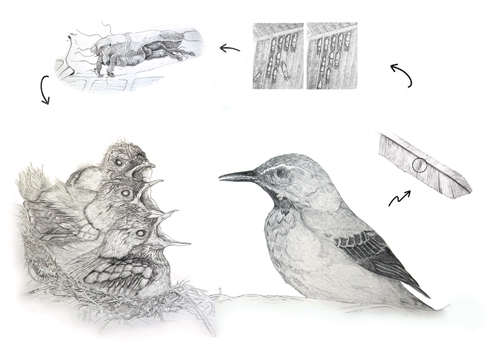The consequences of symbiont transmission strategies are better understood than their adaptive causes. Feather mites are permanent ectosymbionts of birds assumed to transmit mainly vertically and massively from parents to offspring. This may seem maladaptive because of the low survival expectancies of chicks compared to bird parents. Why, then, do feather mites have this mass transmission to nestlings? Here, the transmission of Proctophyllodes doleophyes is studied in two European populations of pied flycatchers (Ficedula hypoleuca). First, the vertical transmission of feather mites was experimentally investigated with an acaricide-vs-control treatment applied to adult birds. Second, for two distant populations during 4 years were described their patterns of mite numbers reduction in adult birds, from egg incubation to chick-rearing periods. Empirical results were compared with the predictions of three hypotheses on how host survival prospects and mite intraspecific competition might drive the evolution of feather mites' transmission strategy. Results are in agreement with previous studies and show that feather mites transmit massively from parents to chicks. The magnitude of the transmission was closer to that predicted by the hypothesis based on intraspecific competition, while a bet-hedging strategy is also partially supported. informacion[at]ebd.csic.es: Doña et al (2017) Vertical transmission in feather mites: insights into its adaptive value. Ecol Entomol doi:10.1111/een.12408
http://onlinelibrary.wiley.com/doi/10.1111/een.12408/full#references

 Las altas temperaturas están provocando que las lagunas y las marismas de Doñana pierdan agua rápidamente
Las altas temperaturas están provocando que las lagunas y las marismas de Doñana pierdan agua rápidamente




